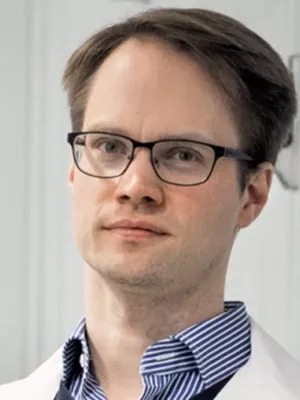
Gustav Smith
Associate professor

Genetic association study of QT interval highlights role for calcium signaling pathways in myocardial repolarization.
Author
Summary, in English
The QT interval, an electrocardiographic measure reflecting myocardial repolarization, is a heritable trait. QT prolongation is a risk factor for ventricular arrhythmias and sudden cardiac death (SCD) and could indicate the presence of the potentially lethal mendelian long-QT syndrome (LQTS). Using a genome-wide association and replication study in up to 100,000 individuals, we identified 35 common variant loci associated with QT interval that collectively explain ∼8-10% of QT-interval variation and highlight the importance of calcium regulation in myocardial repolarization. Rare variant analysis of 6 new QT interval-associated loci in 298 unrelated probands with LQTS identified coding variants not found in controls but of uncertain causality and therefore requiring validation. Several newly identified loci encode proteins that physically interact with other recognized repolarization proteins. Our integration of common variant association, expression and orthogonal protein-protein interaction screens provides new insights into cardiac electrophysiology and identifies new candidate genes for ventricular arrhythmias, LQTS and SCD.
Department/s
- Cardiology
- EXODIAB: Excellence of Diabetes Research in Sweden
- EpiHealth: Epidemiology for Health
Publishing year
2014
Language
English
Pages
826-836
Publication/Series
Nature Genetics
Volume
46
Issue
8
Links
Document type
Journal article
Publisher
Nature Publishing Group
Topic
- Cardiac and Cardiovascular Systems
Status
Published
ISBN/ISSN/Other
- ISSN: 1546-1718

